The Best Board Games of 2023
All images courtesy of the respective game publisher. Games Lists best of 2023
The 2023 board game slate turned out to be as good as ever, with attendance at conventions like Gen Con and Essen breaking even pre-pandemic records, and more new games coming out than your humble reviewer could possibly play. I had a harder time than usual limiting this list to 10 titles, and even more so deciding which game of the top three deserved to be my #1 game of the year. After much deliberation and passionate internal debate here’s my most up-to-date ranking of the 10 best new board games of 2023, having played two new ones just this past weekend, along with a long list of honorable mentions at the end.
10. Distilled
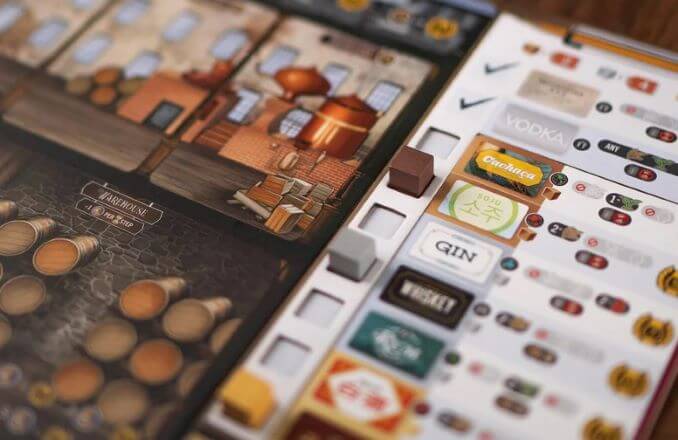
The best new heavy game of 2023, Distilled takes the art and science of liquor distillation to the tabletop, although my preferred strategy of just making rum forever turns out to not be a winning one. Players will indeed acquire ingredients to craft different spirits and may choose to age them for more points while also spending proceeds to upgrade their equipment or just buy better inputs. The game takes place over seven rounds, so you have a fixed amount of time to craft and sell your products, and have to balance short-term needs like income against long-term plays for more points from aging your spirits for more flavor. It’s a big presence on the table with beautiful art and components, and plays about 30 minutes per player. It just edged out Barcelona as the best heavier game I played this year.
9. 3 Ring Circus

3 Ring Circus pits players against each other as operators of small-time traveling circuses in their heyday, with Ringling Brothers’ own traveling show moving around the map as well to mark the progress of the game and award the biggest bonuses. Players will put on shows in small towns to make money and use that to buy cards for new performers, playing them to their player boards for points, money, or other benefits, then moving on to do shows in medium towns and cities for even bigger rewards. There’s some area control on the map that’s determined when the Ringling Brothers caravan hits one of the big cities, some hand management as you decide which cards to spend as cash and which to play, and some strategy in how you move around the board to get to certain locations before your opponents. It plays easier than you’d expect from the rules and components, especially once you’ve gotten the first play out of the way and learned some of its quirks.
8. Fit to Print
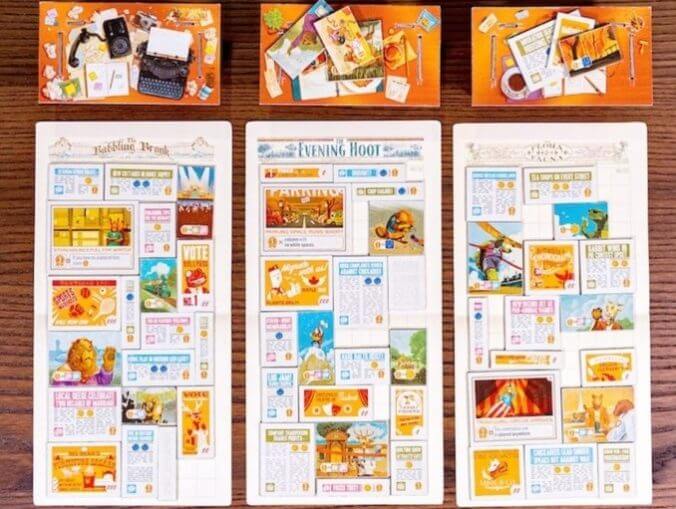
The latest game from the designer of Tiny Towns and Wormholes and the publishers of Calico and Cascadia, Fit to Print has a real-time component that makes it stand apart from most strategy games. Players are publishers of competing newspapers for woodland creatures and will publish Friday, Saturday, and Sunday editions, each a little bigger than the one from the day before, by placing tiles showing articles, photos, and ads. Articles have straight point values, photos have values if they’re placed next to matching articles, and ads get you cash you need to avoid elimination at the end of the game, as the player with the lowest total revenue for the game is automatically out. You also have to cover as much of your board as you can to avoid a penalty for the largest blank space in your paper, and balance happy and sad articles to keep readers satisfied. The real-time part comes when you grab the tiles from the table and lay them out on your board, which you can scale to suit your gaming group and your preferred level of chaos. You can play without the timers, of course, but I think they make the game far more entertaining—and they allow you to play an entire game in less than 30 minutes.
7. Splito
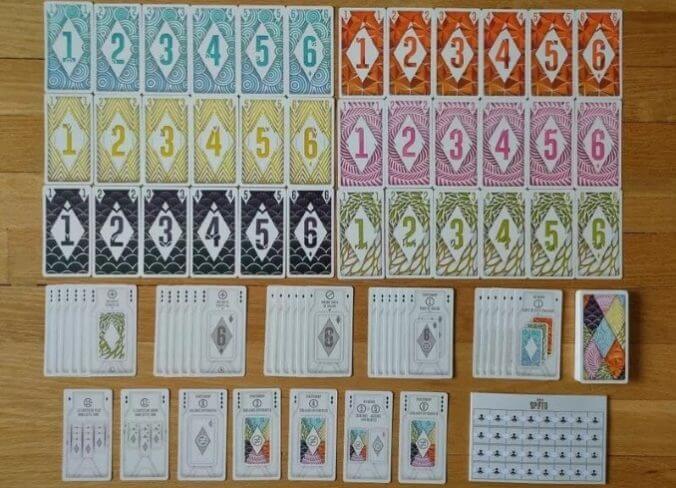
I’ve played this quick, small-box game with its maximum of eight players, and it plays incredibly well at that and any player count from three on up. Splito is semi-cooperative: You play with the players to your left and to your right during the game, collecting points from both sides, but only one player ends up the winner. The deck contains cards numbered 1 through 6 in multiple colors and objective cards that refer to those colors and/or values. On each turn, you play a card to your left or a card to your right; if it’s an objective card, then you and your neighbor must try to meet its criteria so you each get the card’s point value at game-end. It’s almost a party game because it plays so many people and has the kind of laughter-inducing play of that genre, but most party games are kind of dumb, and this one isn’t.
6. Daybreak
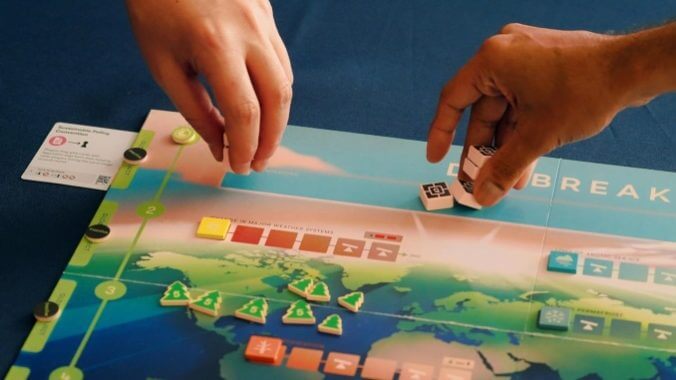
The latest cooperative game from the master of the genre, Matt Leacock, designer of Pandemic and the Forbidden games, this time with first-time designer Matteo Menapace in a cooperative effort (get it?), Daybreak tackles climate change by asking two to four players to play as different regions of the world and to reduce their carbon footprints, increase green energy production, and manage their populations. It’s a card-driven game where players can play those cards for their actions or use their symbols to make previously played cards stronger. You have six rounds to save the world, and after each of the first five, you have to try to sequester all of the carbon you’ve produced and deal with three or more crisis cards designed to make your life worse. It’s Leacock’s most challenging game yet, but also his most important.
5. Apiary
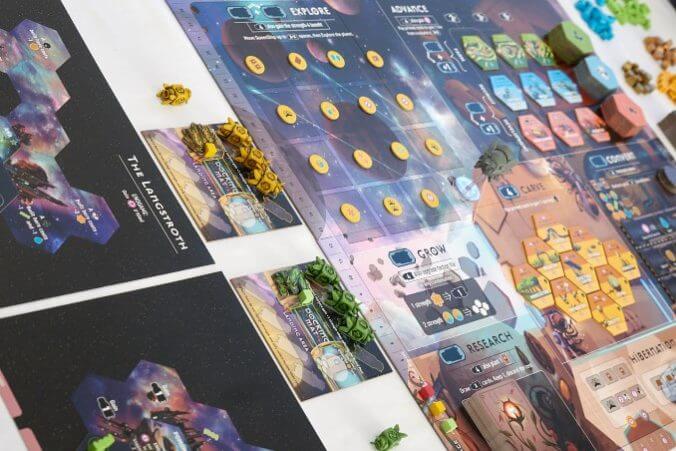
The latest game from publisher Stonemaier Games, which has given the world Wingspan, Tapestry, and Scythe, Apiary posits a world where humanity is gone and bees have evolved to take over. Each player competes to build their hive by placing worker bees to collect five resources, using them primarily to buy tiles that can give new powers and/or award victory points. The new part here is how those workers operate: They have strength from 1 to 4, and when you retrieve them or when another player ‘bumps’ them by placing a worker in their action space, their strength increases by 1. When a bee with strength 4 is retrieved or bumped, it must hibernate, taking it out of play until you take a separate action to retrieve it. It’s a novel way to make players think about how to be efficient with their actions, especially since you need strength-4 workers to gain the most valuable tiles and make the best use of your moves. It’s a table hog but playable inside of 90 minutes even if one of you is new to the game.
4. Wandering Towers

The best new family game of 2023, Wandering Towers is very easy to learn and even more fun to play, because to win the game, you have to move the game’s towers to trap other players’ wizards. The game has a circular track with every players’ five wizards scattered around it along with a number of stackable towers and one castle, Ravenskeep. The goal is to get all of your wizards into Ravenskeep and all five of your potions filled, which you do by moving a tower to a space with one or more wizards on it, trapping them underneath. You can’t move your wizards if they’re trapped until you move the towers off of them, and you can’t peek to see where they are once they’re blocked. It’s a five-minute teach and accessible even to younger players who aren’t reading yet, but it’s the rare family game that’s just as fun for the adults as it is for the kids.
3. Earth
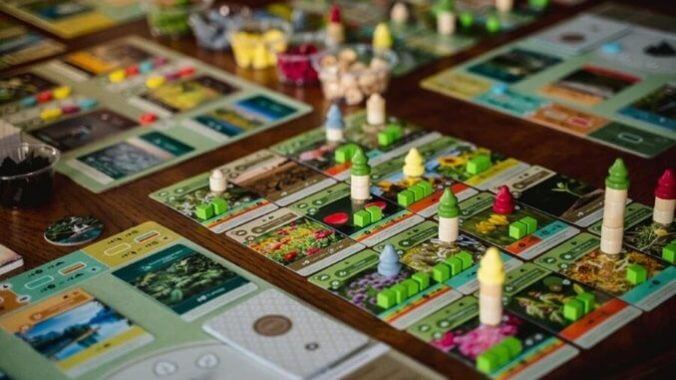
I described Earth as Wingspan squared, and I don’t think I can improve on that now. Earth takes the main idea of Wingspan, where you build engines through cards you play, activating a whole bunch of cards every time you take a related action. You play a card by discarding others from your hand, then play it to build out a 4×4 tableau. There are four main actions, one of which involves playing a card, and when you take one action you activate all cards in your tableau with the color matching that action. You gain points from played cards, from putting other cards into your compost, from private and public objectives, and from growing sprouts and leaves on your played cards. The game ends whenever any player plays their 16th card, finishing their tableau, so it moves quickly and the pace increases because every action becomes more powerful as the game progresses. If you liked Wingspan—and really, if you don’t like Wingspan, this column isn’t for you—but want something just a shade more complex, Earth is your game.
2. Votes for Women
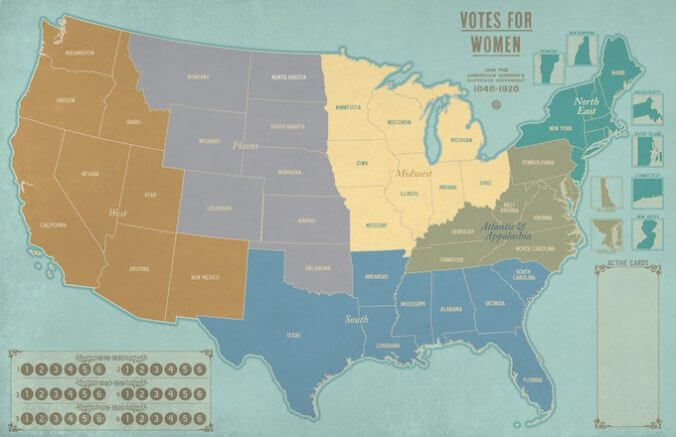
Votes for Women is one of the most thematic games I’ve ever played, taking the battle for women’s suffrage in the United States and turning it into an area-control game across the map of the United States. One player plays as the Suffragist, and the other the Opposition; each has a unique deck of cards that allow for different actions in various regions of the map, or that the player can discard to send campaigners out across the country or gain supporters in different states, or even to lobby Congress to take up the 19th Amendment. If the Suffragist can get enough support from three-quarters of the states and move all six lobbying tokens to the Congress spaces, they win; if at least 13 states reject the Amendment or the sixth round ends before Congress has taken it up, the Opposition wins. Area control games are familiar to most folks, even if it’s just via Risk or newer games like Small World or Carcassonne, but Votes for Women uses this as a way to both teach about the history of women’s suffrage and to take a key moment in American history and make it into a tight back-and-forth gaming experience. The game also has a solo mode and rules for team play, but it shines as a two-player, one versus one experience.
1. The White Castle
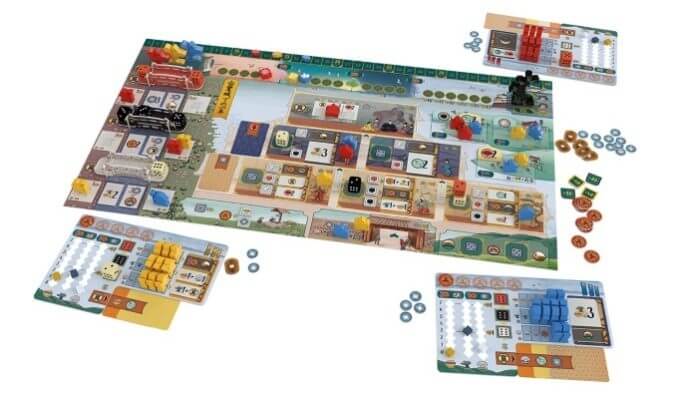
The Red Cathedral is one of the best new games of the last five years, a medium-heavy game in a smaller box that gives you a satisfying intellectual challenge in its promised 80 minutes. The designers of that game, who work under the pseudonyms Isra C. and Shei S., have returned with a spiritual sequel in The White Castle, which has a similar look and feel but novel mechanics. Players in The White Castle get just nine turns in the entire game, three each in three rounds, drafting dice from the board and placing them in action spaces to gain resources or move their warriors, courtiers, and gardeners from their board to the main board, showing Japan’s Himeji Castle. Taking a die with a high value gets you income and more options, but taking a die with a low value might let you gain other resources as you build your engine. With just nine turns per player, the game flies by, and you’ll likely end up wishing you had another turn or two to get more done—but that’s the beauty of The White Castle. It forces you to make those choices, to plan a little more efficiently, and to see what other players are doing so you can find the path to the most points. It gives the satisfaction of a longer, heavier game, in a shorter playing time and a smaller box. It’s fantastic, and my game of the year.
Honorable mentions: Barcelona, Sail, Redwood, Expeditions, Sky Team, The Wolves (technically a 2022 release, but too late for my top 10 list last year), Point City, Bamboo, Get On Board: Paris & Roma, The Search for Lost Species, Forest Shuffle.
I do want to acknowledge some games that are highly regarded but I haven’t played: Hegemony: Lead Your Class to Victory, Darwin’s Journey, Voidfall, The Fox Experiment, and Age of Innovation. These are all longer, heavier games than the ones on my top 10, which reflects some of my personal preferences and just the time required to play and consider games of their ilk.
Keith Law is the author of The Inside Game and Smart Baseball and a senior baseball writer for The Athletic. You can find his personal blog the dish, covering games, literature, and more, at meadowparty.com/blog.